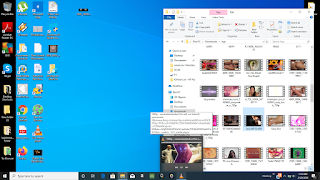
- #Alon kollmann facebook friend mapper download full#
- #Alon kollmann facebook friend mapper download plus#
- #Alon kollmann facebook friend mapper download free#
Nature imposes an upper limit on the contribution per ligand heavy atom to the binding free-energy, commonly referred to as “ligand efficiency” (LE).
#Alon kollmann facebook friend mapper download full#
Since the chemical space spanned by small fragments is orders of magnitude smaller than that spanned by molecules of sufficient size to be hits, it becomes feasible to screen a fragment library representative of the full extent of chemical space. Therefore, linking two such fragments with millimolar affinities (4 kcal*mol −1) will yield a single molecule with micromolar affinity (8 kcal/mol), which is of sufficient affinity to serve as a “hit” for lead optimization.


To a first approximation, the binding free-energies of fragments bound in non-overlapping poses are additive. The funders had no role in study design, data collection and analysis, decision to publish, or preparation of the manuscript.Ĭompeting interests: The authors have declared that no competing interests exist.įragment-based drug discovery relies on a simple premise: identify small-molecule fragments that bind to a target region of the protein and then evolve or link them to create a larger high-affinity molecule. This is an open-access article distributed under the terms of the Creative Commons Attribution License, which permits unrestricted use, distribution, and reproduction in any medium, provided the original author and source are credited.įunding: This work was supported in part by the University of Maryland Computer-Aided Drug Design Center, the Waxman Foundation, NIH (GM51501, CA107331, CA120215) (ADM) and F32CA1197712 (OG). Received: MaAccepted: JPublished: July 10, 2009Ĭopyright: © 2009 Guvench, MacKerell. Jacobson, University of California San Francisco, United States of America The methodology is demonstrated by application to the BCL-6 protein, which is implicated in a variety of cancers, is conceptually easy to understand, and can yield results in a matter of days using present-day commodity computers.Ĭitation: Guvench O, MacKerell AD Jr (2009) Computational Fragment-Based Binding Site Identification by Ligand Competitive Saturation. Importantly, the method provides atomic-resolution results and also explicitly takes into account the effect that molecular water has on binding and the inherent flexibility of protein targets. In the present work, we describe a computational approach to the problem of detecting and characterizing fragment binding. Because such fragments are small, even “good” fragments bind weakly to their targets, therefore requiring significant time, labor, and materials costs for experimental detection and characterization of binding. Once a suitable fragment is discovered, it can then be built up or linked with other fragments to give a drug-like molecule.

Such SILCS FragMaps can be used to qualitatively inform the design of small-molecule inhibitors or as scoring grids for high-throughput in silico docking that incorporate both an atomic-level description of solvation and protein flexibility.įragment-based drug discovery is based on a simple yet powerful principle: instead of trying to screen through the vast number of possible drug-like compounds during the drug discovery process, screen representative drug-like fragments, which are far fewer in number. These FragMaps account both for important sequence and structure differences in the C-terminal halves of the two peptides and also the high mobility of the BCL-6 His116 sidechain in the peptide-binding groove. Applied to the two-fold symmetric oncoprotein BCL-6, the SILCS method yields two-fold symmetric FragMaps that recapitulate the crystallographic binding modes of the SMRT and BCOR peptides.
#Alon kollmann facebook friend mapper download free#
By simultaneously incorporating ligands representative of all these functionalities, the method is an in silico free energy-based competition assay that generates three-dimensional probability maps of fragment binding (FragMaps) indicating favorable fragment∶protein interactions.
#Alon kollmann facebook friend mapper download plus#
To overcome these limitations we describe an explicit solvent all-atom molecular dynamics methodology (SILCS: Site Identification by Ligand Competitive Saturation) that uses small aliphatic and aromatic molecules plus water molecules to map the affinity pattern of a protein for hydrophobic groups, aromatic groups, hydrogen bond donors, and hydrogen bond acceptors. Current computational fragment-based approaches circumvent these issues but suffer from limited representations of protein flexibility and solvation effects, leading to difficulties with rigorous ranking of fragment affinities. Fragment-based drug discovery using NMR and x-ray crystallographic methods has proven utility but also non-trivial time, materials, and labor costs.


 0 kommentar(er)
0 kommentar(er)
